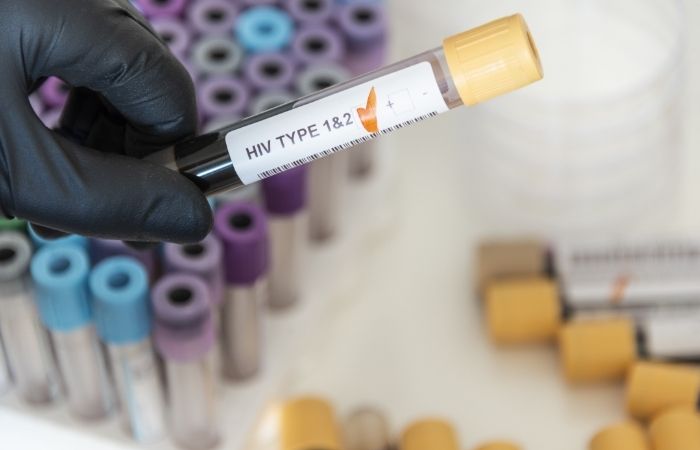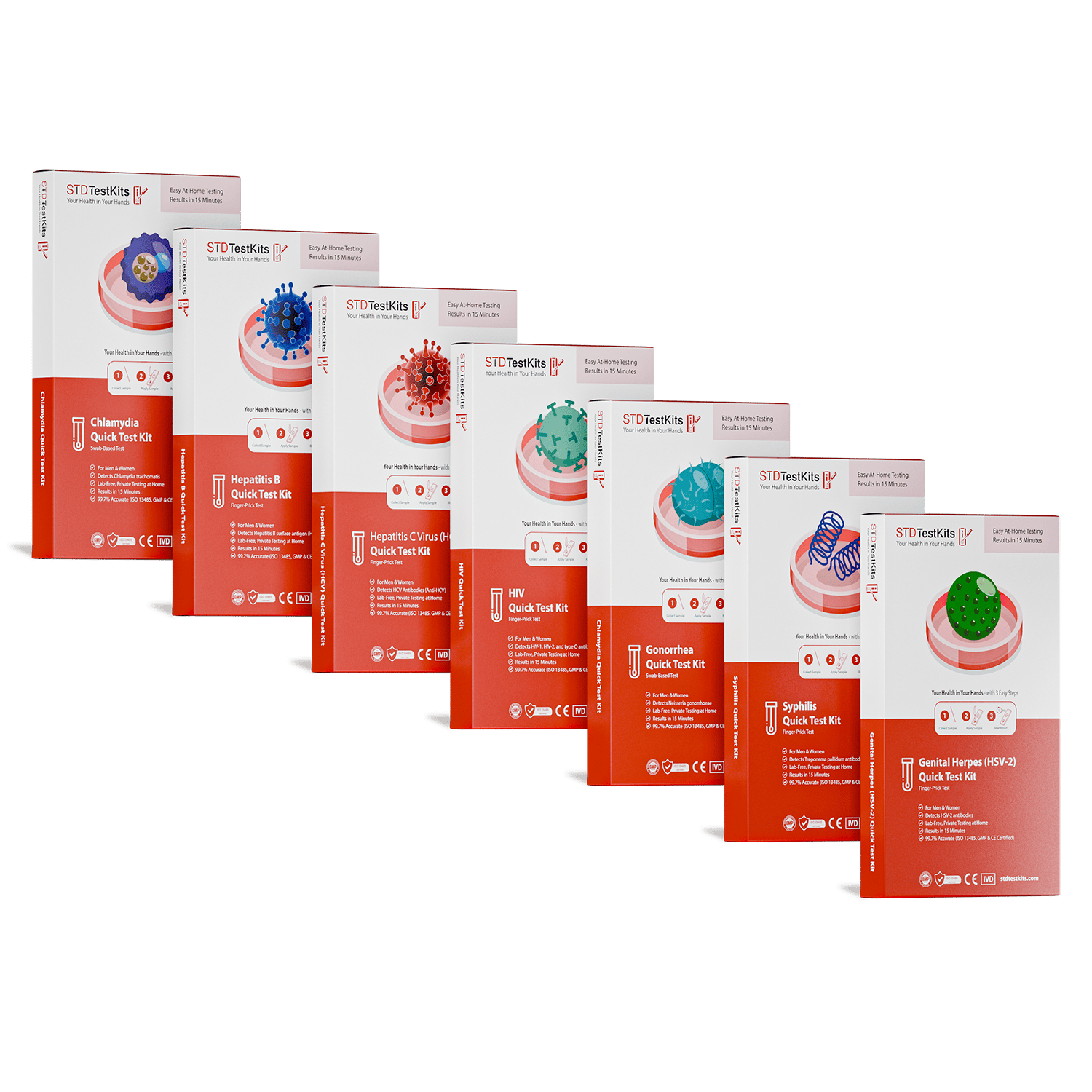Grindr Just Shipped Over a Million HIV Self-Test Kits, Here’s What That Means for You
Quick Answer: The recent Grand Erie Public Health profile reports lower-than-average STI rates, but experts caution that under-reporting, stigma, and asymptomatic infections may be masking the true numbers. At-home STI testing offers a critical tool for residents to monitor their health privately and proactively, especially in areas where clinical access or public testing may be limited.
The Brantford Expositor recently reported on Grand Erie’s new community health profile, covering Brantford and surrounding counties. The standout findings? A surge in emergency dental cases, and STI numbers well below Ontario’s average. While this might seem like a rare bit of good news in public health, low infection counts don’t always tell the whole story. In many rural or mid-sized regions, STIs go underdiagnosed not because they aren’t there, but because they’re not being tested for.
This article takes a hard look at what low STI statistics can actually mean. We’ll explore how home-based testing is changing the landscape of sexual health, especially for people who are asymptomatic, uninsured, or just trying to keep their care discreet. Along the way, we’ll unpack common myths about “no symptoms = no infection,” dig into what makes at-home kits accurate (or not), and offer real guidance on how to take control of your health, no matter what your region’s numbers say.
When “Low Risk” Isn’t the Same as “No Risk”
Kendra, 27, lives in a small town outside Simcoe. She hasn’t had a regular doctor in years, and her last sexual health screening was during college. “I saw the headline about low STI numbers in our area and felt kind of relieved,” she said. “But then I realized, I’ve never even been tested. How would they know if people like me don’t go in?”
That question hits at the core of what many public health professionals worry about when STI rates dip: it’s not always because fewer people are infected. Often, it’s because fewer people are being tested. According to the CDC, many STIs, including chlamydia, gonorrhea, and syphilis, can be completely asymptomatic in their early stages, especially in women and people with vaginas.
Without symptoms, most people won’t even consider getting tested. And when clinic access is limited, as it can be in places like Haldimand or Norfolk County, routine screenings drop off even further. That creates what experts call “surveillance silence,” where the numbers look low not because risk is gone, but because it's invisible.
Who Needs to Test, Even When Local Numbers Say Otherwise
If you live in Grand Erie or a similar region, and you’re sexually active, STI testing still matters. Low regional case counts shouldn’t be read as a pass. In fact, they’re often a signal that more personal responsibility is needed. Here’s who should consider testing now, even in areas labeled as “low risk”:
Figure 1. Common scenarios where testing is needed, regardless of your region’s reported case count.

People are also reading: No Clinic Nearby? Here’s How Rural Americans Are Testing for STDs Anyway
Why At-Home Testing Fills the Gap in Places Like Grand Erie
One of the quiet revolutions in sexual healthcare has been the rise of at-home STI testing kits. These discreet, mail-order tools let people test themselves using simple samples, urine, swabs, or finger-prick blood, without needing to book an appointment, explain their sex life, or even leave the house. For someone like Kendra, who lives an hour from the nearest sexual health clinic, the ability to test from home is more than just convenient. It’s a lifeline.
According to a study published in JMIR Public Health and Surveillance, self-collected STI testing has comparable accuracy to clinician-collected samples in most cases. When done correctly, tests for chlamydia, gonorrhea, and trichomoniasis have shown excellent sensitivity and specificity, meaning you can trust the results when you follow the instructions.
And let’s not forget the psychological side: shame, fear of judgment, or trauma can all be barriers to in-person testing. Offering people the chance to reclaim privacy and control can lead to more testing, not less, and that’s exactly what underreported regions like Grand Erie need.
How Accurate Are Rapid At-Home STI Tests?
Most people are surprised to learn that rapid STI tests, especially those using immunochromatographic or lateral flow methods, are not only fast, but remarkably accurate when used within the correct window period. That said, not all home kits are created equal. Some require a lab to analyze the sample, while others give results in under 20 minutes from a cassette device.
Here’s how different test types compare:
Figure 2. Comparing STI test types by speed, accuracy, and use case.
In a place like Grand Erie, where fewer people are seeking in-person care, rapid home tests can help catch the cases traditional surveillance misses, before symptoms get worse or transmission continues.
Case Study: “I Didn’t Think I Needed to Test Here”
Marco, 32, moved to Norfolk County after living in Toronto for most of his twenties. “Back in the city, STI testing was just part of hookup culture,” he explains. “But out here, it’s quieter. People assume that just because we’re rural, the risk is lower.” After developing irritation during urination and dismissing it as dehydration, Marco finally ordered an at-home test kit on a friend’s recommendation. It came back positive for chlamydia.
“I was floored,” he says. “I thought I was being careful. I thought STI rates were low around here.” His story isn’t unique. It’s a powerful reminder that infections don’t stop at county lines, and neither should our vigilance.
For anyone unsure, at-home testing offers a no-pressure option to check in on your sexual health, on your terms, in your timeline.
Why Symptoms (or Silence) Can’t Be Your Only Clue
One of the most dangerous myths in sexual health is this: “If I had an STI, I’d know.” In reality, the vast majority of infections, especially chlamydia, gonorrhea, and even early-stage syphilis, can cause no symptoms at all. Or worse, the symptoms are so mild that they’re mistaken for things like UTIs, yeast infections, shaving irritation, or even dietary changes.
According to the CDC’s most recent surveillance data, over 70% of chlamydia cases in women are asymptomatic. And in men, many skip testing altogether unless symptoms show up, by which time, transmission may have already occurred. If Grand Erie’s numbers seem low, that silence may just be statistical fog.
Testing is the only way to know for sure. And with STIs, knowing early makes all the difference: in treatment, in protecting partners, and in preventing long-term complications like infertility or pelvic inflammatory disease.
How At-Home Testing Works (Yes, It’s Really That Simple)
If you’ve never used an at-home STI test before, the process is straightforward and fully private. Most kits arrive in discreet packaging with no sexual health labels on the outside. Inside, you’ll find clearly labeled components, sterile swabs or sample cups, and a detailed instruction guide. Depending on the test, you might:
- Provide a urine sample in a sterile container
- Swab the inside of your vagina, throat, or rectum
- Use a lancet to prick your finger and collect a few drops of blood
Rapid-result kits include a test cassette, similar to a COVID-19 test, where your sample is applied and the result appears in minutes. Mail-in kits require you to send the sample back in a prepaid envelope to a certified lab, and you’ll receive your results securely via app or email.
This at-home combo kit tests for the most common STDs in one go, chlamydia, gonorrhea, syphilis, HIV, and more. It’s a smart way to stay informed without waiting for a doctor’s schedule to open up.
When to Test, Retest, or Talk to a Doctor
Timing is key. If you had sex with someone new recently and tested negative, but later you get symptoms or are still worried, it's a good idea to get tested again. This is how to think about retesting:
- Initial test: Ideally taken 14+ days after exposure
- Retest after treatment: Wait at least 3 weeks to avoid false positives from dead bacterial DNA
- Ongoing risk: Retest every 3–6 months if you’re sexually active with multiple partners
And if symptoms like burning, discharge, or sores appear at any time, test immediately. The symptoms of a STI may come and go, but the infection stays until it is treated. You can talk to a clinic or telehealth provider about treatment options if a home test comes back positive.
STD Rapid Test Kits also offers discreet options for partners, so everyone can test and treat together.
What Happens If You Test Positive? (The Real Talk)
Let’s say your test comes back positive. Maybe it’s chlamydia. Maybe it’s syphilis. Maybe it’s one of those words that makes your stomach twist because no one ever taught you how to deal with it calmly. First, know this: it’s common. Like, really common. According to Canadian public health data, STI rates have been climbing nationwide, not because people are riskier, but because more folks are finally testing and reporting. Testing positive isn’t shameful. It’s responsible.
Once that result’s in your hands, it’s what you do next that counts. For most STIs, the treatment is easy, think single-dose antibiotics or a short course of meds. But the first step is confirmation. Even though rapid home tests are highly accurate, many healthcare providers will recommend a lab-based follow-up, especially if you’re symptomatic, pregnant, immunocompromised, or haven’t tested before.
If you’re not sure where to go, telehealth services are a game-changer. In many provinces, you can book a virtual visit, upload a photo of your test result, and get a prescription sent to your pharmacy. No awkward clinic wait, no second-guessing in the car afterward.

People are also reading: Why So Many Women Aren’t Believed About STD Symptoms
How to Tell a Partner Without Panicking
This might be the hardest part, not physically, but emotionally. Telling someone you have an STI can feel like walking into a room naked. But here’s the thing: it’s not a confession. It’s a care act. You’re giving someone information that can protect their health and allow them to act, too.
If the thought of that conversation makes your chest tighten, here’s a script to soften it:
Figure 3. Real-world partner notification scripts designed to reduce anxiety and promote care.
Also worth knowing: many provinces have anonymous partner notification services, or you can send a text/email through platforms like TellYourPartner.org. You don’t have to do it alone.
What About Long-Term Effects? Do I Need to Worry?
Yes, some STIs can cause problems if they aren't treated. Chlamydia and gonorrhea can cause problems with fertility or pelvic inflammatory disease. Syphilis can harm the brain and heart if it is not treated for years. But here’s the key: when caught early (like through an at-home test), most STIs are treatable, reversible, and manageable. You’re not broken. You’re not ruined. You’re just human, and proactive.
This is why at-home STI kits matter so much in places like Grand Erie. They catch what the system often misses. And they put the power of health back in your hands.
If your head keeps spinning, peace of mind is one test away. Order your discreet combo test kit here and take the next step forward.
FAQs
1. Wait, if STI rates are low where I live, do I still need to test?
Totally fair question. But here’s the thing: “low rates” usually means “low reporting,” not necessarily low infections. If fewer people are testing (or can even access a clinic), the numbers will look cleaner than they really are. If you’re sexually active, testing is still a good idea, even in “quiet” areas like Grand Erie.
2. Can I really trust an at-home test to be accurate?
When used correctly and within the right timeframe, yes. At-home tests, especially ones that detect antibodies or antigens, are built on the same tech clinics use. They’re not magic, but they’re science. Just make sure you’re testing at least 2 weeks after exposure unless you're using a test made for early detection.
3. What if I don’t have any symptoms? Do I still need to test?
Honestly? Most people don’t have symptoms. That’s the scary part. STIs like chlamydia and gonorrhea can hang out silently for months (or years!) without throwing any obvious red flags. So yes, if you’ve had sex and haven’t tested in a while, symptoms shouldn’t be your only cue.
4. How does the test even work? Am I going to mess it up?
Not at all. Most tests are either a urine sample, a cheek or vaginal swab, or a few drops of blood from a finger prick. Instructions are super clear (think IKEA, but make it healthcare), and the kits are designed to be user-proof. You won’t need a lab coat, or courage, really. Just curiosity and a few minutes alone.
5. What do I do if my test is positive?
First, take a breath. It’s not a moral failure, it’s a medical situation. The next step is usually a confirmatory test and treatment, which can often be handled via telehealth or at a walk-in clinic. Most STIs are easily treated, especially when caught early. And if you’re nervous about telling a partner, we’ve got scripts and resources for that too.
6. How private is this really? Will the test box scream “STD” on my doorstep?
Nope. The packaging is totally discreet, no logos, no awkward return address, no “I hope my roommate doesn’t ask” moment. It’ll look like you ordered socks from Amazon. Also, your results are private and can only be accessed safely online or by email.
7. How often should I be testing?
It all depends on how often you have sex. If you're in a monogamous relationship and both of you have just been tested, once a year might be enough. You should get tested every three to six months if you have more than one partner, have casual hookups, or use dating apps a lot. It's like brushing your teeth, but for your sexual health.
8. Can I test too early after sex?
Yes, that is possible. You could get a false negative if you test too soon and the infection isn't there yet. That's why most tests work best about 14 days after you've been exposed. If you're still worried, take a second test later just to be safe. It's worth it to have peace of mind.
9. I only had oral sex. Could I still have something?
You sure can. Oral sex can transmit gonorrhea, herpes, syphilis, and even chlamydia. And throat infections often have zero symptoms. So yep, oral counts when it comes to STI risk.
10. Can I test with my partner? Or like... turn this into a thing we do together?
In fact, that’s one of the best ways to make testing feel less scary and more supportive. Think of it as part of your intimacy, not something separate from it. Light a candle, open your kits, compare swab techniques. Sexy and responsible is a vibe.
You Deserve Answers, Not Assumptions
The Grand Erie Public Health report may say STI rates are low, but that doesn’t mean the risk is. In regions where testing access is uneven and symptoms go unnoticed, self-testing is more than a backup plan. It's a tool you can use to protect yourself and your partners on the front lines.
At-home STI kits put the power back in your hands, letting you take action, not chances.Testing from home is one of the easiest ways to keep your health private and safe, whether you're worried, curious, or just behind.
Don’t wait and wonder, get the clarity you deserve. This at-home combo test kit checks for the most common STDs discreetly and quickly.
How We Sourced This Article: We combined current guidance from leading medical organizations with peer-reviewed research and lived-experience reporting to make this guide practical, compassionate, and accurate.
Sources
1. Health profile reveals unique Grand Erie trends
2. WHO Fact Sheet: Sexually Transmitted Infections
3. Sexually Transmitted Infections Prevalence, Incidence, and Cost Estimates – CDC
4. Sexually Transmitted Infections Surveillance, 2024 – CDC
5. Chlamydia and Gonorrhea: Screening – U.S. Preventive Services Task Force
6. Chlamydial Infections – STI Treatment Guidelines, CDC
7. Chlamydia, Gonorrhea and Infectious Syphilis in Canada – Government of Canada
8. Safe practices, testing lower risks of infectious chlamydia – DHA News
9. Sexually Transmitted Infections – StatPearls / NCBI Bookshelf
About the Author
Dr. F. David, MD is a board-certified infectious disease specialist focused on STI prevention, diagnosis, and treatment. He blends clinical precision with a no-nonsense, sex-positive approach and is committed to expanding access for readers in both urban and off-grid settings.
Reviewed by: K. Lavoie, RN, MPH | Last medically reviewed: November 2025
This article is meant to give you information, not to give you medical advice.







